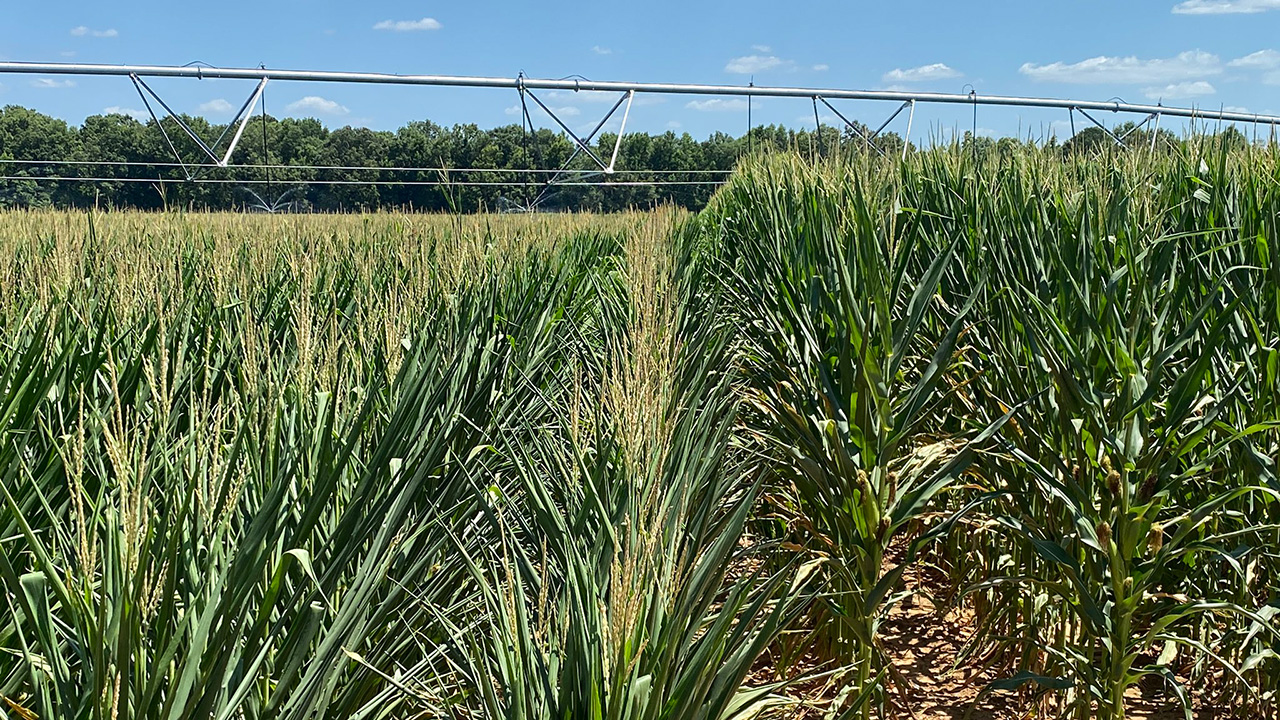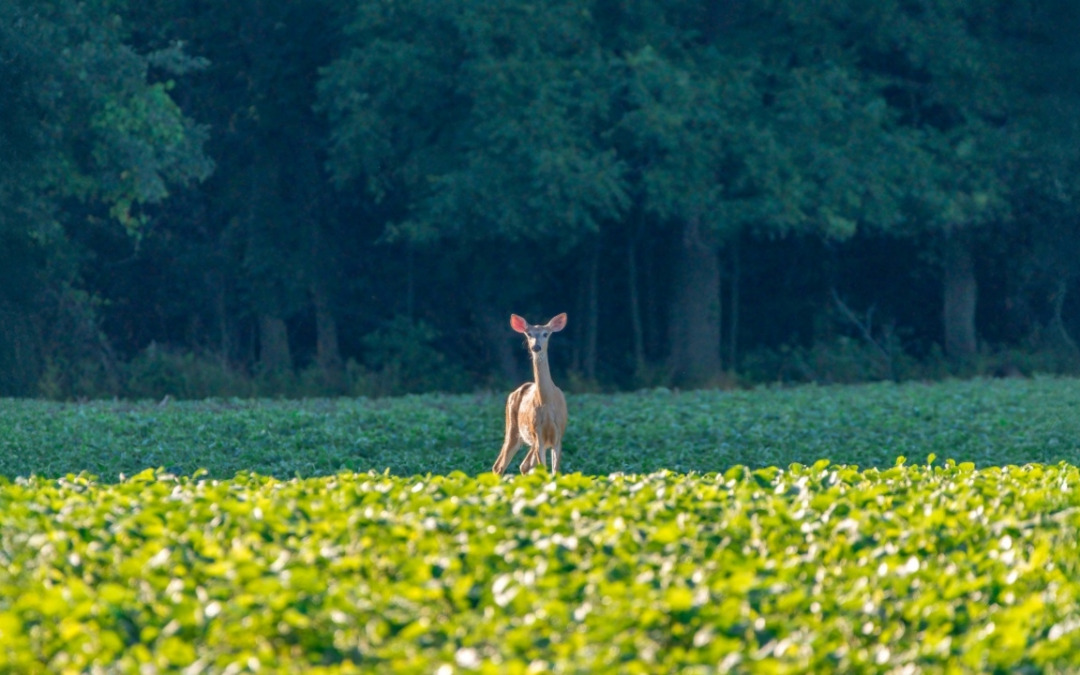The line from the classic musical “Oklahoma” that refers to corn being “as high as an elephant’s eye” would not apply to some of the new hybrids becoming available to producers.
Reduced-stature corn, also referred to as “short” corn, is a concept that has gained popularity in recent years, and researchers at Auburn University are conducting trials to determine if there’s a fit for it on Alabama farms.
While reducing plant height has been an important innovation in other crops such as wheat and rice, it has not been successfully deployed in corn, despite numerous attempts. But the need to continue boosting corn yields as well as increasing resilience against severe weather has brought about a renewed focus on the concept.
“Short corn is a type of corn plant that is 2 to 3 feet shorter than the conventional corn currently grown,” said Ero Francisco, assistant professor in the College of Agriculture’s Department of Crop, Soil & Environmental Sciences and Extension agronomist for grain crops.
“It brings some definite advantages to growers, such as increased protection from lodging and greater application flexibility—the possibility to perform ground spraying applications later than conventional corn—which can contribute to higher potential yield,” Francisco said.
These novel hybrids are a result of a natural breeding process, he said, and may present a lower demand for water and nutrients due to their shorter stature, but more research needs to be conducted, and the adaptation of hybrids to Southern conditions is still a work in progress.
A short-stature corn plant is like a conventional corn plant in the number of leaves, nodes and ears produced, Francisco said. The only difference is in the height.
“The internodes produced below the ear height are shorter than normal, but the internodes produced above the ear are the same as on conventional corn,” he said. “Research and commercial field data from the Midwest—where short corn is more widely grown—have demonstrated similar potential yields with these hybrids.”
Short corn does require higher seeding rates since plants are smaller in size and do not occupy as much space as conventional plants, Francisco said. While conventional corn requires seeding rates ranging from 26,000 to 36,000 seeds per acre, the short corn seeding rate range is between 38,000 to 44,000 seeds per acre.
Harvesting short-stature corn is one piece of the puzzle that needs to be considered, especially when corn is grown in a low to medium-fertility soil or when it faces drought conditions, Francisco said.
“Under such conditions, the short corn ears may end up lower than desired and closer to the ground, resulting in a complicated task for combine heads to pick them up,” he said.
Overall, these hybrids show tremendous promise in their ability to yield well and tolerate higher plant populations and narrower rows. However, many physiological and management questions remain and will continue to be investigated by researchers.
Several major agricultural seed and genetic companies have begun introducing short-stature corn hybrids, including Bayer’s Preceon Smart Corn System, which is currently being grown on three units of the Alabama Agricultural Experiment Station, said Francisco, who is also a researcher with the Experiment Station.
“We tested the Smart Corn technology in 2023 and then again this year at the Tennessee Valley Research and Extension Center in Belle Mina,” he said. “We expanded the research in 2024 throughout the state to the Gulf Coast Research & Extension Center in Fairhope and the E.V. Smith Research Center in Shorter.”
Francisco expects to have results of those trials available to growers soon, and he hopes to deliver an Extension report by October for growers to evaluate before they select their hybrids for next year.
While Alabama doesn’t come close to competing with certain Midwestern states in terms of corn acres, it remains an important cash crop for the state’s farmers,
“Field corn is an important crop for Alabama growers because it is used in feed for cattle and in the poultry industry, both large sectors of the state’s agricultural economy,” Francisco said. “Corn also fits very well into our cropping systems as a good option for a summer cash crop alternating with soybean and winter wheat. In addition, it has been a good rotational crop for cotton producers fighting nematode problems.”
Corn in Alabama is grown mostly in the northern region of the state, especially in the Tennessee Valley area, but one can find a corn field in almost any county.
About 80% to 85% of the corn grown in Alabama is not irrigated, Francisco said, but other new technologies are impacting production.
“Each year, several hybrids come onto the market bringing new technologies to help growers fight biotic problems such as root and ear worms as well as diseases,” he said. “Imagine a plant that can resist the attack of different worms, tolerate the pressure of diseases, that can be sprayed with specific herbicides and don’t die, that stay green for longer in the field, and that deliver a higher potential yield. Those are just a few examples of what growers can count on today in improved corn hybrids.”





